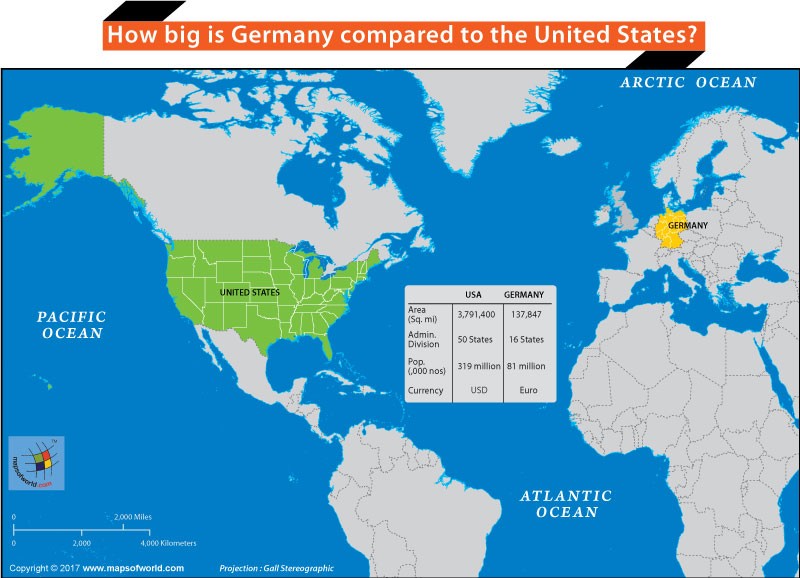Germany and the United States are two of the world’s most influential nations, both economically and politically. When considering their global impact, it’s easy to imagine them as similar in size. However, a direct comparison reveals a significant difference in land area. Just how big is Germany compared to the US? The answer might be more striking than you initially think.
Germany’s total area covers approximately 137,847 square miles. In contrast, the United States is vast, spanning around 3,791,400 square miles. This means the United States is roughly 28 times larger than Germany. To put this into perspective, if you were to overlay Germany onto a map of the United States, it would appear relatively small.
 World map illustrating the size comparison between Germany and the United States, highlighting Germany's significantly smaller area compared to the US. This visual aid helps understand the geographical scale difference between the two countries.
World map illustrating the size comparison between Germany and the United States, highlighting Germany's significantly smaller area compared to the US. This visual aid helps understand the geographical scale difference between the two countries.
To further grasp this size difference, consider individual US states. Germany is comparable in land area to a few specific states. Montana, for example, is slightly larger than Germany. New Mexico is a bit smaller. Perhaps the most relatable comparison is with California. Germany is about 85% the size of California, which has an area of 163,695.7 square miles. Imagine Germany stretching across California from Los Angeles in the south to Redding in the north – that visual gives a tangible sense of its dimensions within the US context.
Beyond landmass, population is another key factor. While Germany is a densely populated country with approximately 81 million people, the United States has a significantly larger population of around 319 million. This difference in population density further emphasizes the scale of the United States. Despite having a smaller area, Germany holds its own as Europe’s largest economy and second most populous nation, playing a crucial role in European and global affairs. The United States, of course, stands as the world’s largest economy, wielding considerable global influence.
Historically, both nations have navigated complex paths. Germany’s 20th century was marked by significant upheaval, including the two World Wars and subsequent division during the Cold War. The country was split into West and East Germany until reunification in 1990. The United States, while geographically untouched by the World Wars on its mainland, emerged as a global superpower in the 20th century. Understanding the size difference between Germany and the US provides a valuable geographical context when considering their respective roles on the world stage and their internal structures, with Germany comprising 16 states compared to the United States’ 50.
In conclusion, while Germany is a major global power and a significant European nation, it is considerably smaller than the United States in terms of land area. This size comparison is crucial for understanding the geographical scales at play when discussing these two important countries.
